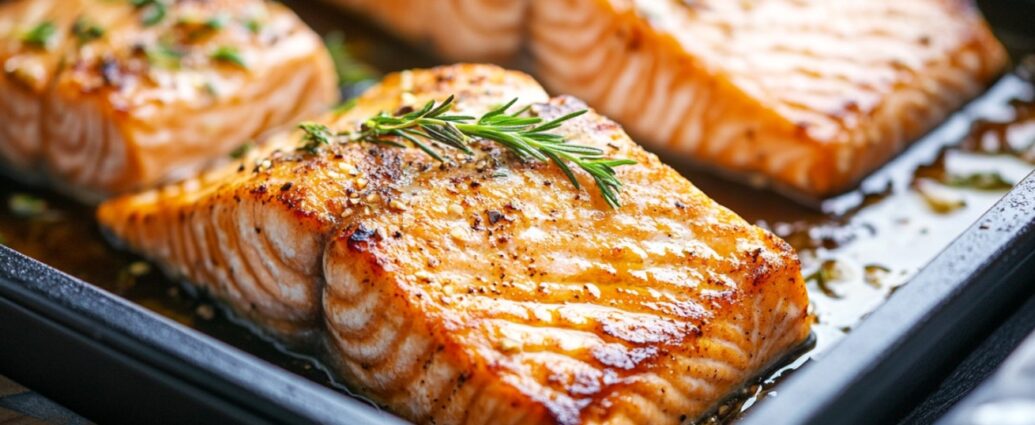Perfectly cooked salmon hits a sweet spot: tender, juicy, and just opaque enough to melt in your mouth.
Getting it right involves more than timing—it calls for temperature precision, visual awareness, and a few kitchen-tested techniques chefs swear by. As you probably know, salmon is among the healthiest fish in the world.
Serve it over herbed rice, flake it into a salad, or tuck it into a fresh ciabatta for a next-level sandwich.

Salmon Done Right
Ingredients
Equipment
Method
- Prep Fillets:Pat salmon dry using paper towels—helps with searing. Rub with olive oil, season both sides with salt and pepper. Let rest at room temperature for 10–15 minutes to avoid uneven cooking.Preheat Pan:Heat skillet over medium-high until just shy of smoking. You want high heat for that crisp exterior.
- Sear Salmon:Place fillets skin-side down. Press gently to keep them flat. Sear 3–4 minutes undisturbed. Flip and sear another 2–3 minutes. Lower heat if necessary.Check Internal Temperature:Insert thermometer into thickest part:120°F (49°C): Rare, soft texture125°F (52°C): Medium, moist and tender (chef-preferred)130°F (54°C): Medium-well, slightly firm145°F (63°C): USDA safe temp, firmer and fully opaque
- Visual Cue Check:Opaque edges + translucent center = just about right. Center should flake with slight resistance.Finish & Rest:Remove from heat. Tent loosely with foil. Let rest 3–4 minutes. Residual heat continues cooking slightly.Serve:Garnish with lemon slices, fresh herbs, or drizzle with garlic butter if desired.
Video
Notes
Cooking Tips
- Fish sticking to pan? It’s not ready to flip. Wait until it naturally releases.
- No thermometer? Gently press top of fillet—rare feels soft, medium bounces slightly, well-done feels firm.
- For oven finish: After searing one side, transfer pan to preheated oven at 375°F for 4–6 minutes.
- Skin-on fillets help retain moisture. Crisp it up by pressing down during the sear.
| Nutrient | Amount |
|---|---|
| Calories | 320 |
| Carbohydrates | 1g |
| Protein | 34g |
| Fat | 19g |
| Serving Size | 170g |
| Saturated Fat | 4g |
| Polyunsaturated Fat | 6g |
| Monounsaturated Fat | 7g |
| Trans Fat | 0g |
| Cholesterol | 85mg |
| Sodium | 330mg |
| Potassium | 850mg |
| Fiber | 0g |
| Sugar | 0g |
| Vitamin A | 120 IU |
| Vitamin C | 4mg |
| Calcium | 25mg |
| Iron | 1.2mg |
Alternative Methods for Cooking Salmon

Poaching offers a gentle and foolproof method that keeps salmon incredibly moist. Start by submerging fillets in a shallow pan filled with simmering liquid—water, broth, or white wine infused with aromatics like:
- Lemon slices
- Garlic
- Herbs
Cook over low heat just until the flesh turns opaque and flakes easily. No crisp crust here, but the texture is delicate and ideal for cold preparations like salads or grain bowls.
Broiling delivers quick results with minimal prep. Place seasoned fillets on a foil-lined tray and position them a few inches below the broiler.
High direct heat caramelizes the surface, adding a lightly charred flavor. Keep a close eye—salmon can go from perfect to overdone in under a minute.
For added depth, brush on a glaze like miso, honey mustard, or teriyaki during the last minute of cooking. Broiling works well for thinner cuts and creates a crisp top layer without drying the interior.
Summary
Nailing salmon comes down to technique and attention. Choosing the right method—searing, poaching, broiling, or beyond—depends on the desired texture and flavor.
Monitoring internal temperature and watching for visual cues ensures every fillet turns out just right.
With a bit of practice and the right tools, it’s easy to make salmon a go-to dish that feels special every time it hits the plate.






